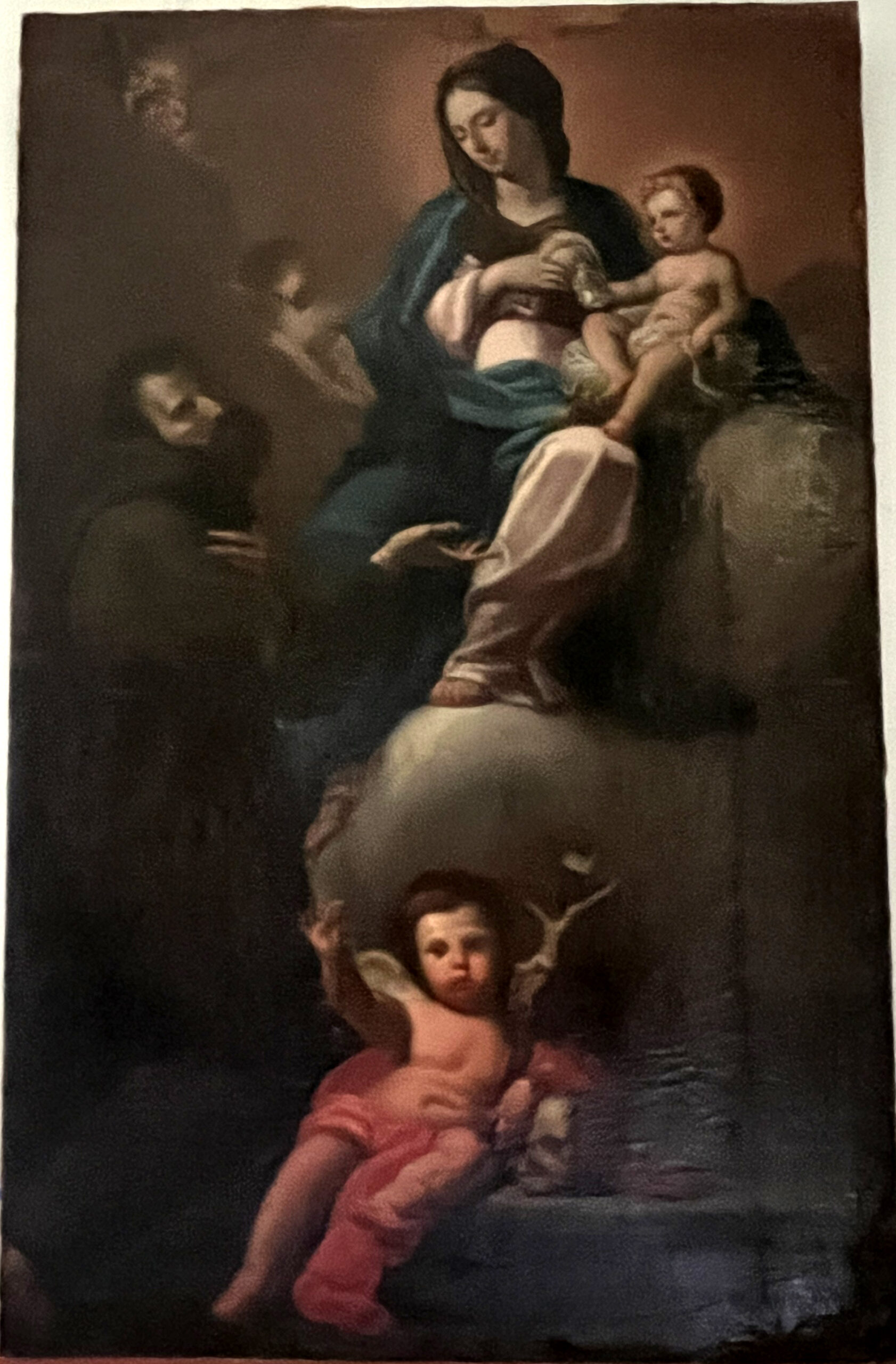A work of good workmanship, it presents in the center of the composition the Virgin on a throne of clouds holding the Child who collects in a small glass cruet the milk flowing from the Mother’s breast.
Kneeling in the lower left corner is St. Bernard of Corleone, and centrally seated next to a skull is an angel holding a crucifix and a cilice, iconographic attributes of the saint.
It is interesting to note that when the painting was made, Bernard (1605-1667) had not yet been canonized; however, his thaumaturgic powers and reputation for sanctity were so widespread that as early as 1771, just three years after his beatification (1768), an altar dedicated to him in the church of the Madonna delle Grazie was recorded in Lipari.
As for the Virgin Mary, according to a tradition of Eastern origin, later spreading to the West as well, it often happens-especially when invoked under the title of Our Lady of Graces-that she is found with her breast uncovered or while breastfeeding the Child. In this canvas, the unusual presence of the glassy flask could refer to an episode in the saint’s life or to a relic of Our Lady’s milk kept in the Cathedral of Lipari, in a crystal cruet, which was carried processionally to the church of Our Lady of Grace every July 2
Bishop Francesco Arata, in his pastoral visitation of 1681, pointing out the individual relics then present in the Cathedral notes, “In a small vase there is a glass ampulla in which some milk of the Blessed Virgin Mary is kept, which is carried processionally from the Chapter to the Church of Santa Maria delle Grazie on July 2 each year.“


